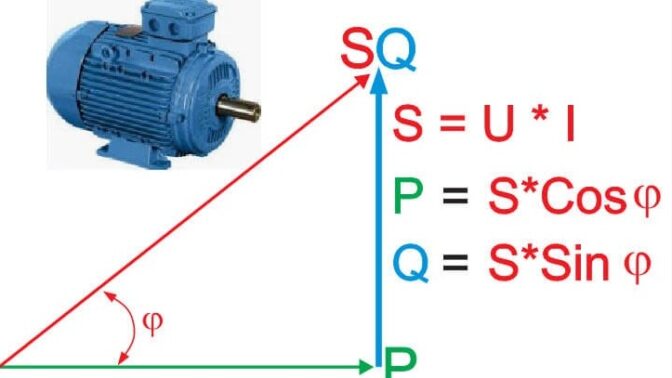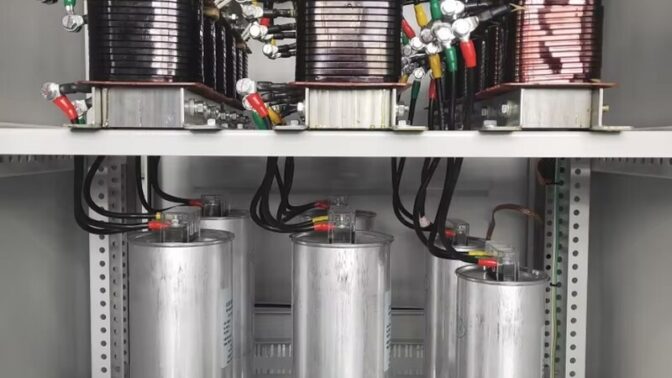24-12-2025
Synthesize information about active harmonic filters
Harmonics are a dilemma for large power systems in industrial plants. Effective harmonic filtering improves equipment performance, reducing damage and energy loss. Harmonic filters are seen as the perfect solution to this problem. Let's find out an overview of active harmonic filters in the following article from BTB Electric.
What is a Harmonic Filter?
A harmonic filter is an electrical device designed to eliminate harmonics in an electrical signal. There are many types of harmonic filters such as active harmonic filters and passive harmonic filters. In this article, we focus on providing information about active harmonic filters - the most efficient single-device harmonic filtering solution for industrial power systems.
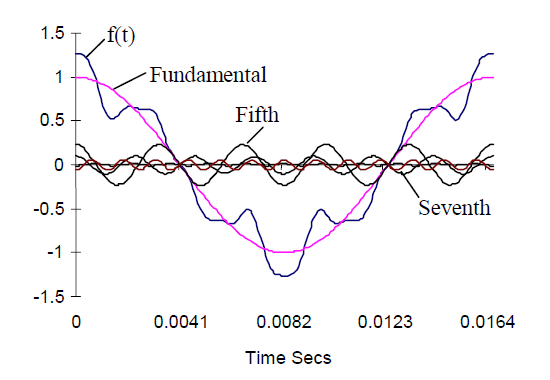
Harmonics are waveforms that have a frequency n times that of the fundamental waveform in an electrical system. Harmonics interfere with electrical devices operating at a fundamental frequency (50Hz or 60Hz), creating noise that causes energy loss and reduced performance. The harmonics produced in the power system cause AC waveforms to deviate from the ideal sine shape, called distortion waveforms or complex waveforms.
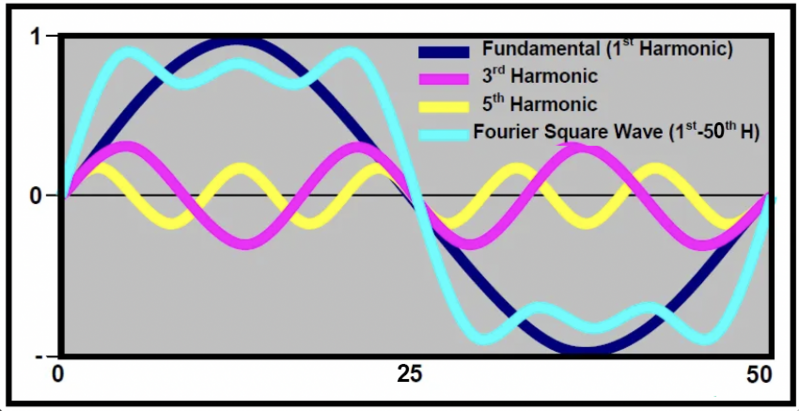
Active harmonic filters (AHFs) work in tandem with the system, canceling harmonic noise and introducing fundamental or reverse frequency waveforms to reduce harmonics. Harmonic filters can provide additional current to calibrate the power factor. The current is eliminated of interfering agents, is "cleaner" and in phase.
Functions of active harmonic filters
Active harmonic filters are important power quality equipment for complex, large-scale industrial power systems. AHF is effective in harmonic cancellation, load balancing and power factor correction, preventing overheating, protecting the operation of electrical equipment. Investing in active harmonic filters is a must-do to comprehensively protect the power infrastructure and improve the performance of the entire system.
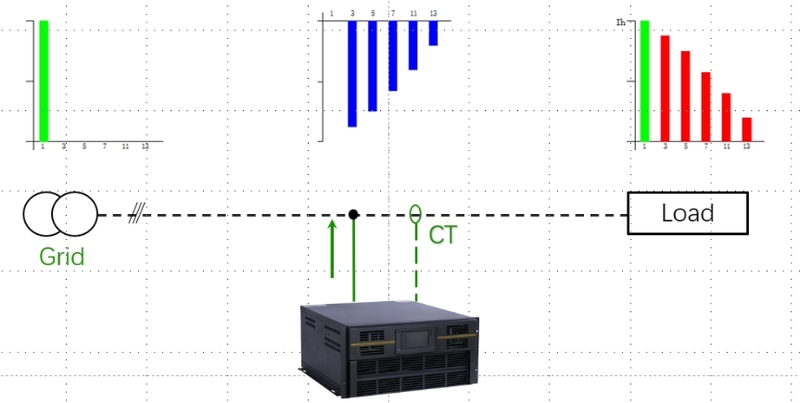
Some of the main functions of AHF active harmonic filters:
- Harmonic Removal: Removes voltage harmonics and 2nd, 3rd, 5th, 7th, 9th order current harmonics,... out of the system, reducing the total harmonic distortion of THD.
- Load balancing and power factor: Redirecting the load current to balance the phases and reactive power compensation to calibrate the power factor.
- Protect electrical equipment: Reduce the situation of electrical equipment emitting noise, overheating or sudden circuit breaks, thereby reducing power consumption and increasing the operating efficiency and durability of the equipment.
- Prevent harmonics from arising: Infinite protection prevents potential harmonic resonance issues.
- Reduce overload: Reduce RMS current in the electromagnetic system, thereby reducing power loss and heat-generating overload in the equipment.
Structure and principle of operation of active harmonic filters
The active harmonic filter structure consists of the following main components:
- Measurement block: Measures the actual harmonic waveforms in real time in the system and then passes the information down to the DSP control block.
- DSP Control Block: Using the Fast Fourier algorithm to analyze harmonics and convert them into mathematical Fourier sequences, calculate the amount of inverse frequency harmonics to suppress existing harmonics.
- IGBT Block: The signal after being analyzed by the DSP controller will be transmitted and form PWM pulses that control the IGBT block, pushing the amount of back-frequency harmonics to cancel out the harmonics in the system.
The above three main component blocks work sequentially to completely filter the harmonics in the system.
Applications of active harmonic filters
Every solution that increases the efficiency and reduces the energy costs of the power system creates harmonics-related problems. For example, the use of LEDs in variable speed drives, uninterruptible power supplies (UPS), HVAC systems, elevators, escalators, and other non-linear loads all produce harmonics.
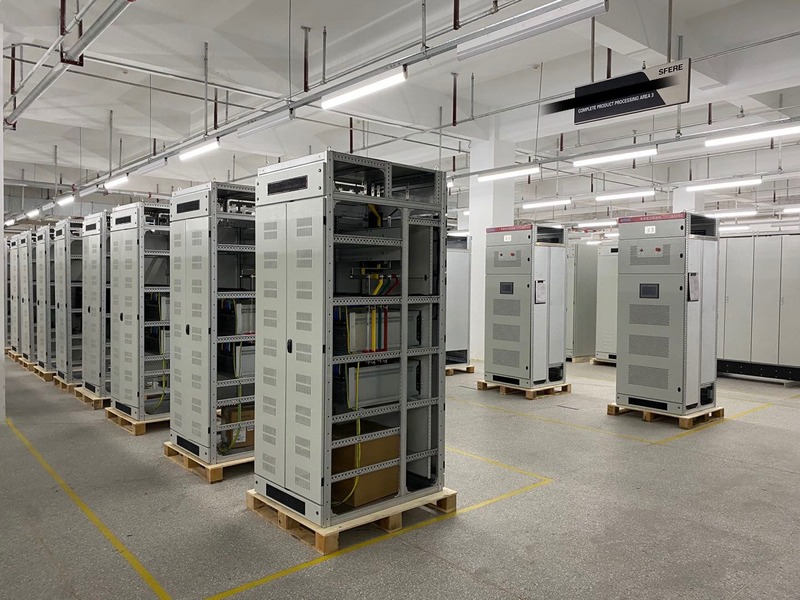
Using an active harmonic filter is the perfect harmonic filtration method for electrical systems to protect harmonics from the inside and outside. Today, AHF is being used for:
- Power transmission system: Reduce harmonic interference and increase reliability for power distribution and transmission operations; protect transformers, lines, relays, breaker from harmonic impacts.
- Industries: Protects factories, production lines, and electrical equipment such as motors, inverters, and control circuits from harmonic damage.
- Electronics and Telecommunications Industry: Protects electronic and telecommunications equipment such as amplifiers, frequency converters, and circuits from signal interference and improves the quality of data transmission.
- Automation system: Protect control devices, sensors, processing chips, and control circuits from signal interference caused by harmonics.
- LEDs and lighting fixtures: Reduce interference and increase the life of lighting fixtures; protect control circuits, switchgear, power adapters,... to the impact of harmonics.
Choosing an AHF Harmonic Filter from BTB Electric
The active harmonic filter from BTB Electric reduces the electromagnetic interference caused by harmonics to avoid deterioration of the power system transmission capacity, ensuring the normal operation of the equipment. The compensated current range is from 50A to 600A, the harmonic filter spectrum is from 2nd to 50th, and the harmonic filtration efficiency is over 97%.
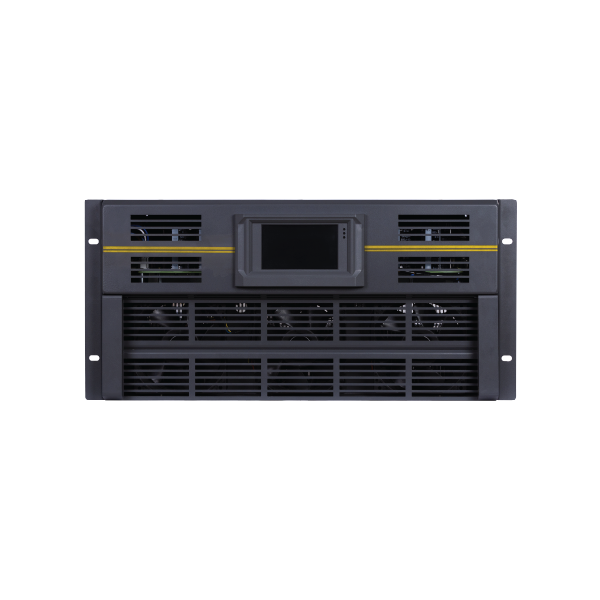 |
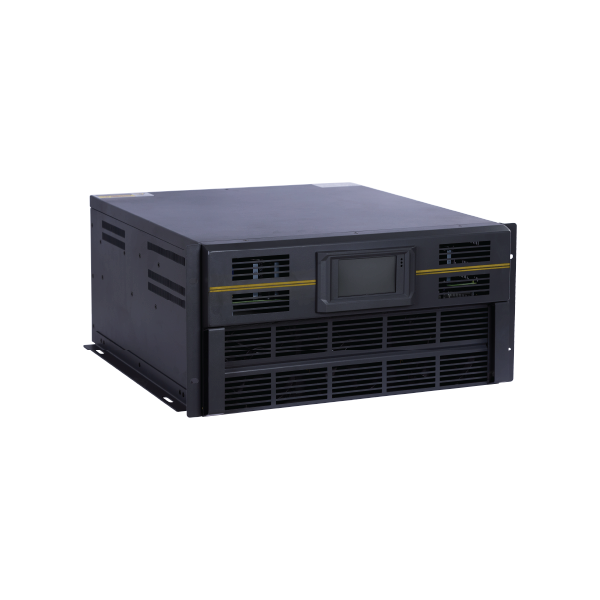 |
We provide 3 designs for harmonic filters: Drawer type, tower cabinet type, and wall mounted type. The product range complies with a series of standards: JB/T 11067-2011, DL/T 1216-2013, IEC/EN 60439-1, 2014/30/EU, EN 61000-6.

